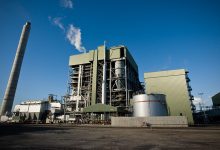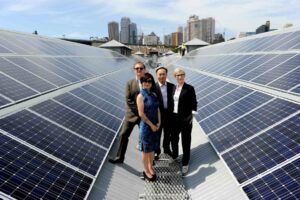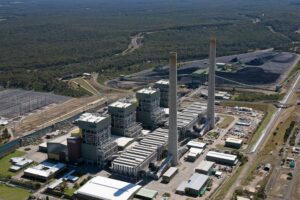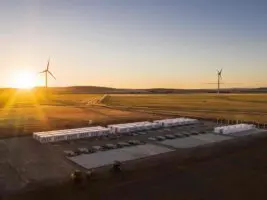The Queensland government has delivered on its promise to establish a $500 million renewable energy fund, despite a state budget handed down on Tuesday showing dividends derived from government owned energy assets being thumped by lower electricity prices and new network pricing determinations.
The 2020-21 Queensland budget has detailed the extent to which lower wholesale electricity prices, while good for energy consumers, has cut the revenues of Queensland government owned generators, which has flowed through to reduced dividends delivered back into government finances.
In its first budget since its recent re-election, the Palaszczuk government cited the lower wholesale electricity prices for lower energy revenues, as well as being the main contributor to substantial write-offs to the value of state-owned generators.
Stanwell Corporation recently wrote-down the value of its generators, primarily its Tarong and Stanwell coal-fired generators, cutting $719.5 million from their combined valuation. CS Energy recorded its own write-downs to the value of the Callide B and C coal generators, amounting to $191.7 million and $161.7 million respectively. Both blamed falling electricity prices.
The Queensland government-owned companies weren’t alone in being forced to write-down the value of their generators, with most of the major players in Australia’s electricity market recording similar impairments over the last 12 months,
But write-downs came at the same time as new network pricing determinations which considerably reduced revenues that can be recovered by the government-owned network company Energy Queensland.
This all flowed through to lower dividends delivered to government finances, the latest budget showing energy related dividends from networks and state owned generators to amount to just $384 million in the 2020-21 financial year, down from almost $1.4 billion delivered in 2018-19 and more than $1.1 billion in the 2019-20 financial year.
It effectively cuts almost $1 billion from government revenues, and had effectively been using these dividends to deliver rebates to Queensland households on their electricity bills, including a $200 rebate provided to each household against their electricity costs.

Despite the revenue hit, the budget has delivered on a Palaszczuk government promise to establish a $500 million renewable energy fund, which will be made available to Queensland’s government-owned Corporations, including CleanCo, Stanwell Corporation and CS Energy, to invest in the construction of new wind and solar projects within the state.
Newly appointed minister for energy, renewables and hydrogen, Mick de Brenni, said that government investments in new state-owned wind and solar projects would ultimately deliver benefits to Queensland consumers.
“An affordable, reliable energy supply underpins our economic plan for post-COVID recovery, and renewables will play a central role,” de Brenni said. “Right now, renewables make up approximately 20 per cent of Queensland’s energy mix, and that figure will more than double over the next decade as we aim for 50 per cent by 2030.
“Queenslanders emphatically support more manufacturing and growth and that means we need cheaper power to support jobs growth in these emerging industries. We’re backing this by backing cheaper, cleaner, reliable energy sources.”
The funding is in addition to $145 million committed by the Palaszczuk government to support the establishment of three renewable energy zones across the north of the state, which the minister said was already attracting interested projects to the state.
“Already investors are lining up to get into these renewable energy zones with around 192 projects putting their hands up to build new, renewable generation and energy storage projects across the state,” .
“Since 2015, 44 large-scale renewable energy projects have launched in Queensland, representing around $8.5 billion in investment and around 7000 construction jobs.”
The budget also includes previously announced funding of $10 million, to be spread over four years, to support the development of the state’s hydrogen industry.








